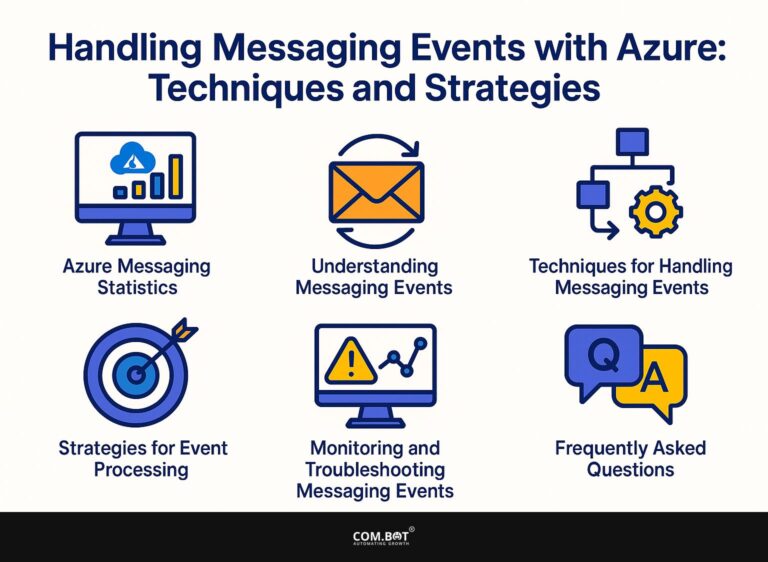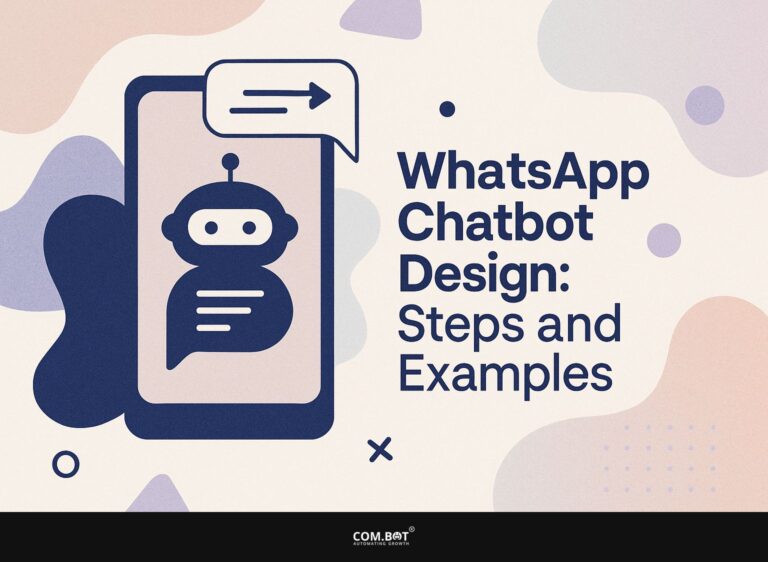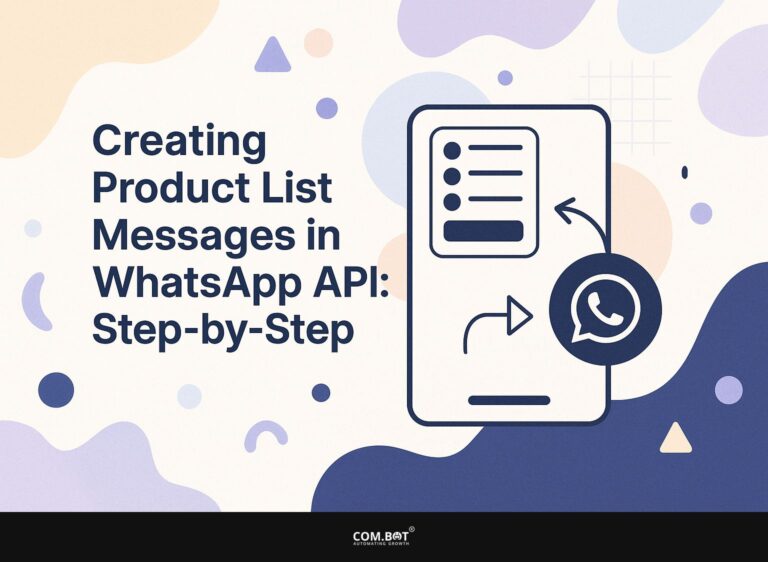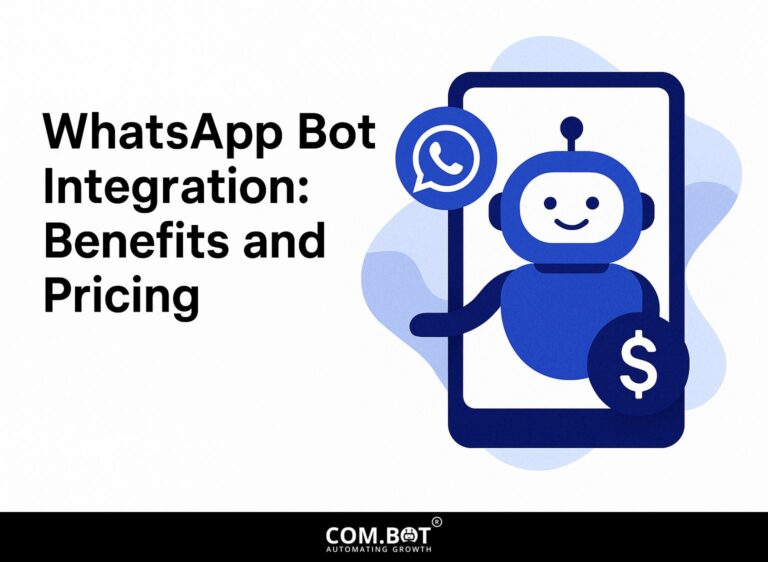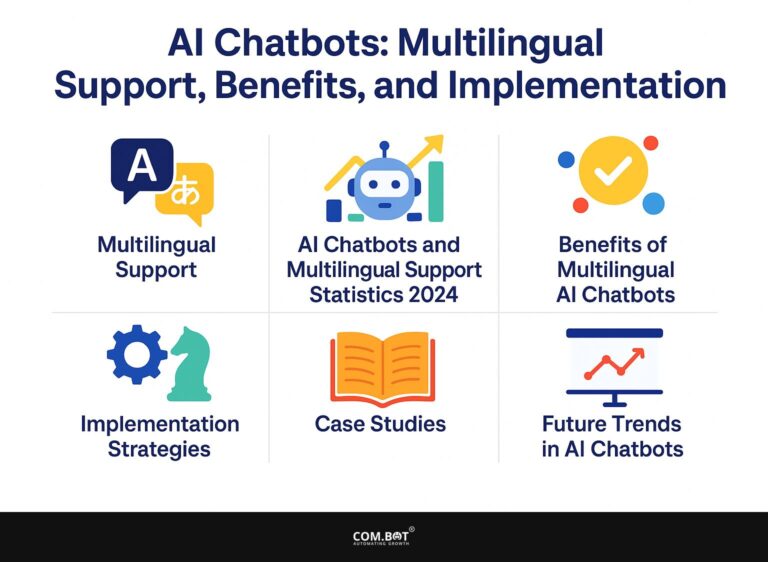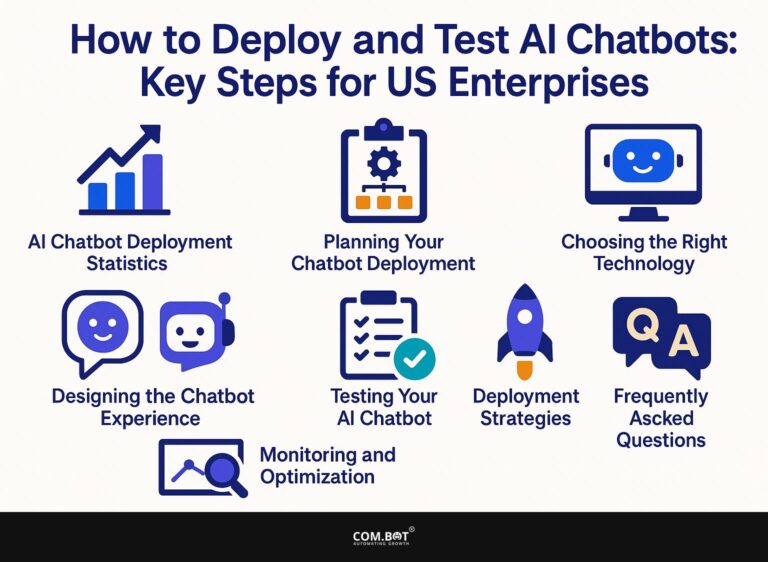Natural Language Processing in WhatsApp AI: Improvement
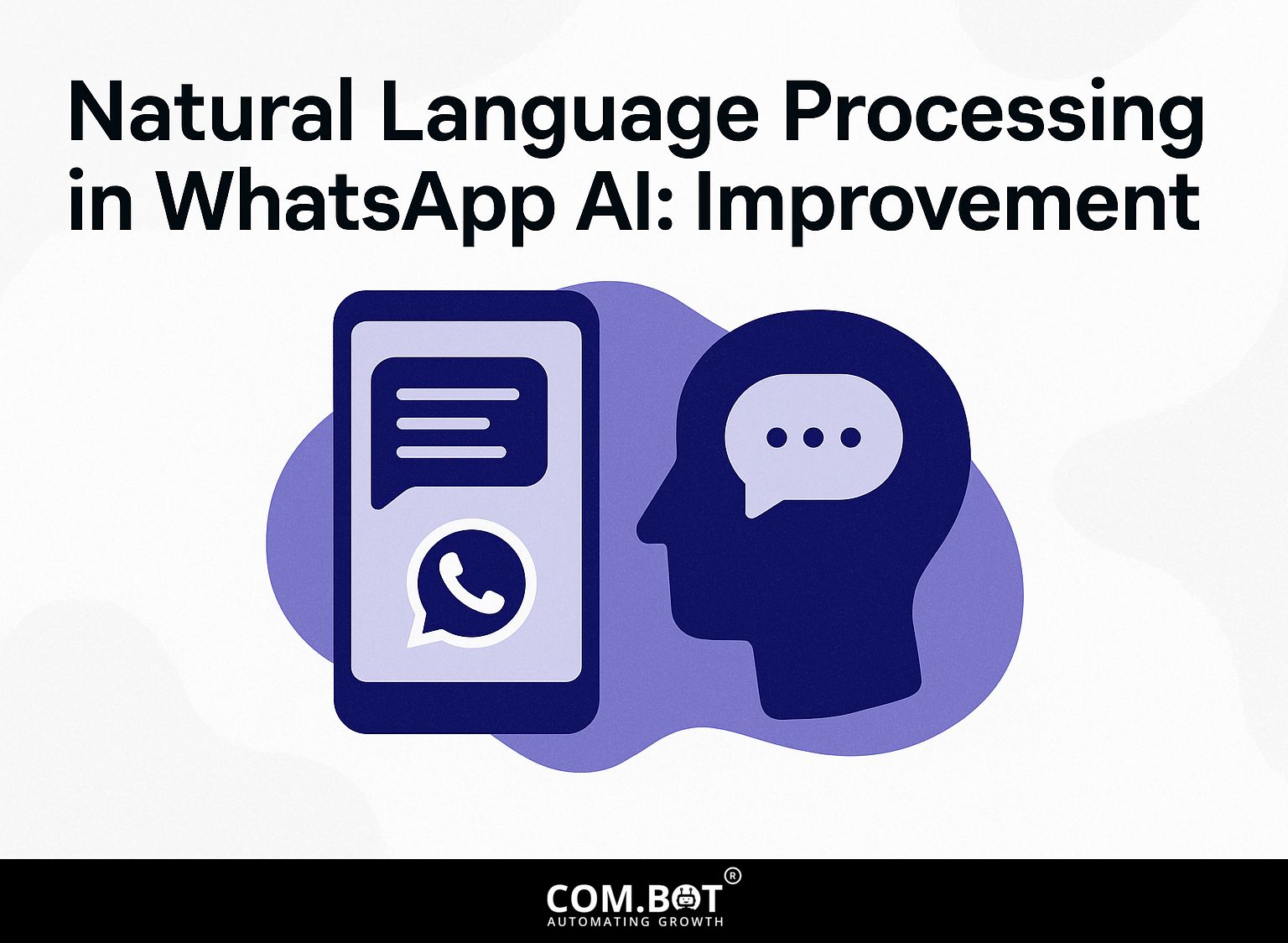
Natural Language Processing (NLP) in WhatsApp AI is changing how chatbots improve customer experience. WhatsApp’s AI features are changing the way users communicate by using detailed conversation patterns. This article dives into the current state of NLP within WhatsApp, exploring its applications, challenges, and strategies for improvement. Learn how these new ideas can improve your knowledge of AI in conversations and change the direction of messaging platforms.
Key Takeaways:
- NLP is very important for making messaging platforms like WhatsApp better for users.
- Challenges like language variety and grasping context are being tackled using data collection and machine learning methods.
- The next steps for NLP in messaging apps involve combining AI that works with different types of data and tailoring features to keep users interested.
- 1 WhatsApp AI Overview
- 2 WhatsApp NLP AI Chatbots Popularity and Usage Statistics
- 2.1 WhatsApp AI Chatbots Statistics: Global Reach and Usage
- 2.2 WhatsApp AI Chatbots Statistics: Business Adoption and Effectiveness
- 2.3 WhatsApp AI Chatbots Statistics: User Engagement and Demographics
- 2.4 WhatsApp AI Chatbots Statistics: Market Penetration by Country
- 2.5 WhatsApp AI Chatbots Statistics: Cost and Efficiency
- 2.6 Current Capabilities
- 2.7 Role of AI in User Experience
- 3 Challenges in NLP for WhatsApp
- 4 Improvement Strategies for NLP in WhatsApp
- 5 Future Trends in NLP for Messaging Apps
- 6 Frequently Asked Questions
- 6.1 1. What is Natural Language Processing in WhatsApp AI?
- 6.2 2. How can Natural Language Processing improve WhatsApp AI?
- 6.3 3. What are some practical applications of Natural Language Processing in WhatsApp AI?
- 6.4 4. How does Natural Language Processing work in WhatsApp AI?
- 6.5 5. Can users control the level of Natural Language Processing in WhatsApp AI?
- 6.6 6. What are the potential benefits of implementing Natural Language Processing in WhatsApp AI?
1. Definition and Importance
NLP includes algorithms and models that help computers understand language, which is important for improving customer support tools like chatbots.
For instance, IBM Watson uses sophisticated NLP techniques to analyze customer inquiries and provide relevant responses, significantly reducing wait times. Companies can integrate Watson with their existing customer support systems, allowing for proactive issue resolution.
Platforms like Dialogflow or Microsoft Azure Bot Service enable businesses to build customized chatbots. These tools help in ongoing learning and better conversations, leading to a more engaging user experience similar to talking with a person.
2. Applications in Messaging Platforms
Messaging platforms use NLP to manage user interactions, make replies quicker, and provide customized experiences, as demonstrated with tools like Clickatell for WhatsApp integration.
Dialogflow by Google is a tool that lets businesses make custom chatbots that understand regular speech. This has led to a 30% increase in customer satisfaction for brands using it.
Similarly, Microsoft’s Azure Bot Service offers sentiment analysis capabilities, allowing businesses to tailor conversations based on user emotions.
In practice, organizations using these tools have reported reduced response times and increased engagement rates, highlighting the measurable impact of integrating NLP into customer service strategies. As mentioned in our exploration of customer service bots on WhatsApp, leveraging these platforms can significantly enhance user interaction experiences.
WhatsApp AI Overview
WhatsApp is quickly improving its AI tools to make user experience better, adding features for smooth communication and effective customer support.
WhatsApp NLP AI Chatbots Popularity and Usage Statistics
As WhatsApp enhances its AI capabilities, it’s crucial to understand the popularity and mechanisms of its chatbots. For an extensive analysis of this trend, our comprehensive study on WhatsApp AI Chatbots delves into their growing importance and functionality.
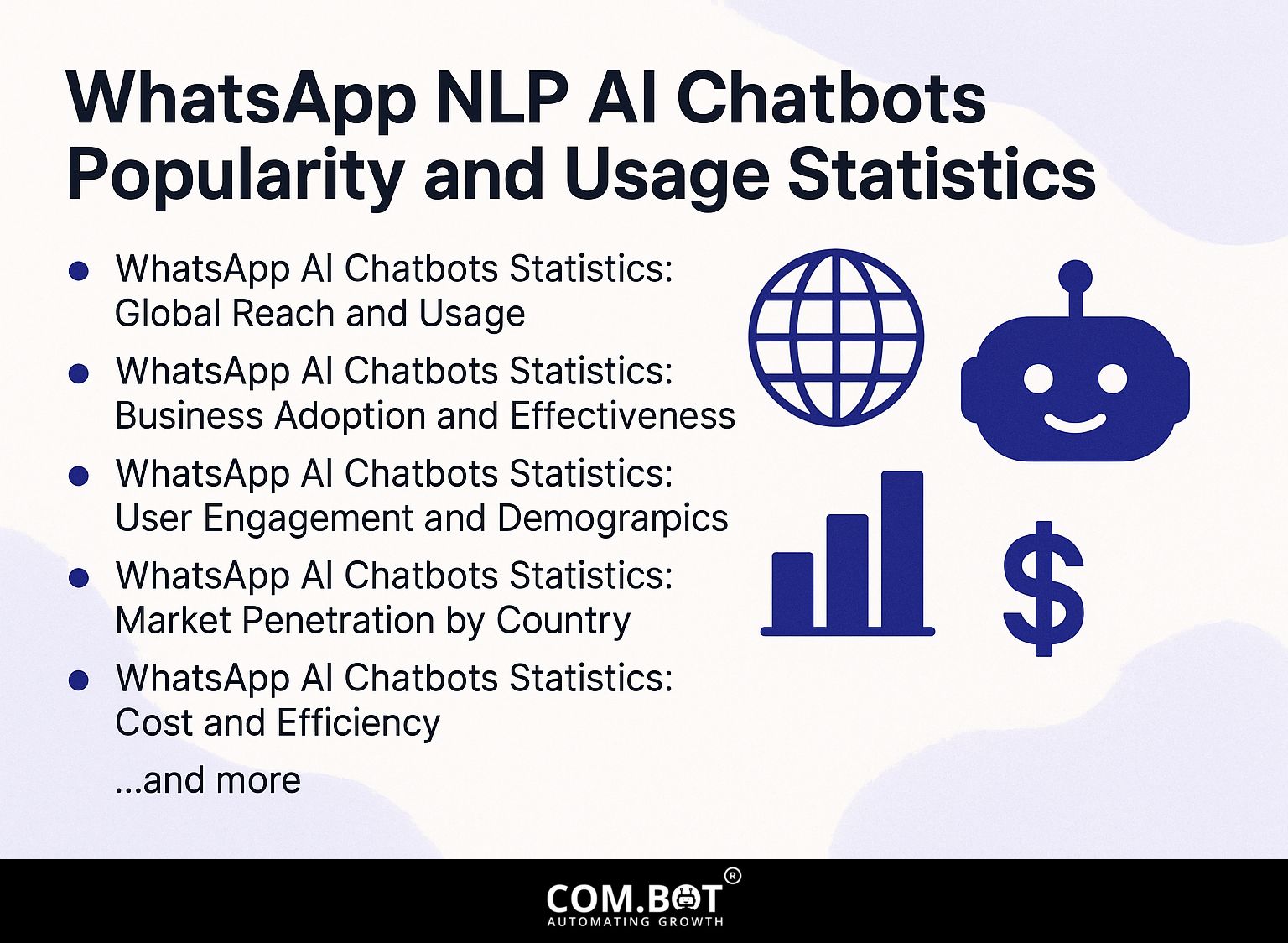
WhatsApp AI Chatbots Statistics: Global Reach and Usage
WhatsApp AI Chatbots Statistics: Business Adoption and Effectiveness
WhatsApp AI Chatbots Statistics: User Engagement and Demographics
WhatsApp AI Chatbots Statistics: Market Penetration by Country
WhatsApp AI Chatbots Statistics: Cost and Efficiency
The data on WhatsApp NLP AI Chatbots Popularity and Usage Statistics provides a complete look at how businesses and users interact with WhatsApp and its AI-powered features. The extensive reach and usage of WhatsApp are evident with daily messages delivered reaching 65 billion in 2020 and user base totaling 2 billion worldwide in 2021. People widely use WhatsApp in 180 countries, making it an essential communication tool worldwide.
Business Adoption and Effectiveness indicates the platform’s significant role in commerce and customer interaction. A substantial 75% of businesses employ WhatsApp Business to engage customers, with 54% of consumers opting in for customer support through the app. The use of chatbots on WhatsApp notably saves 2.5 billion hours, showcasing their efficiency. Furthermore, these chatbots enhance conversion rates for abandoned cart campaigns, achieving an impressive 52.5% This shows how well they work in increasing sales.
User Engagement and Demographics reveal diverse engagement levels, with 54.2% male and 45.8% female users. Notably, users aged 18-34 make up 31%, while those aged 35-44 constitute 27%, reflecting a broad demographic appeal. This demographic distribution shows WhatsApp’s importance among different ages, which is important for focused marketing plans.
In terms of Market Penetration by Country, WhatsApp holds substantial ground with 98.9% penetration in Brazil and 97% in India, indicating its dominance in these regions. In the UK, penetration is at 71.3%, showcasing strong yet comparatively moderate engagement. These high levels of market entry are important for companies trying to grow their presence in these areas.
Cost and Efficiency metrics demonstrate significant business benefits, with a 30% reduction in costs attributed to chatbots, and staffing needs during peak hours dropping by 80%. These numbers show the practical benefits of using AI chatbots, helping companies use resources wisely while keeping excellent service quality.
Overall, the data shows WhatsApp’s important role in communication and business activities. Its large user base, successful use of AI, and appeal to different age groups make it a necessary tool for modern communication.
Current Capabilities
At present, WhatsApp uses AI to handle automatic messaging, suggest words as you type, and provide instant customer support, improving how users communicate.
Businesses are using WhatsApp’s AI features in many practical ways.
For instance, chatbots can handle customer inquiries 24/7, quickly addressing common questions about products or services. A retail store may use chatbots for order tracking and returns, streamlining the customer experience.
AI can analyze customer behavior to suggest personalized recommendations. For example, in the hospitality industry, hotels can suggest nearby attractions based on previous conversations with guests. By adding these features, companies improve how well they work and make customers happier.
Role of AI in User Experience
AI plays a key role in WhatsApp by offering custom chats and quicker replies, which help keep users interested.
For instance, businesses using WhatsApp chatbots can reduce response times to under a minute, vastly improving customer satisfaction.
AI algorithms analyze user behavior, allowing businesses to tailor messages based on previous interactions. This can lead to engagement rates soaring by as much as 50%.
Tools like Twilio for WhatsApp and Landbot simplify setting up automatic tasks, enabling seamless chat interactions.
By using these technologies, brands improve how users interact with them and encourage users to stay longer through active engagement. Those curious about the technical implementation might appreciate our guide on WhatsApp AI chatbots.
Challenges in NLP for WhatsApp
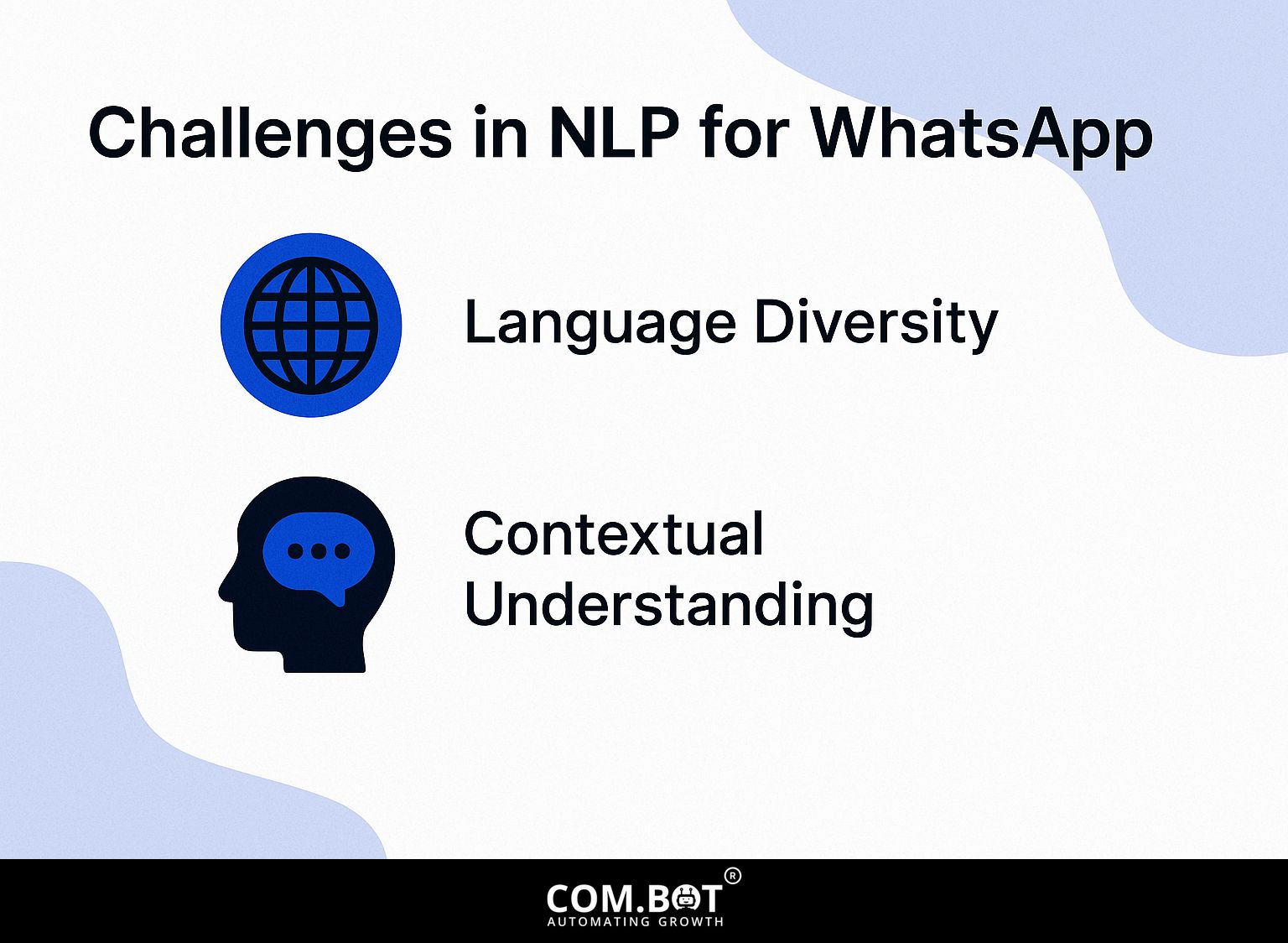
NLP offers strong tools for WhatsApp, but important challenges need to be solved to make it work well for different users. Exploring how HR bots function within WhatsApp can provide valuable insights into potential solutions.
1. Language Diversity
The different languages used on WhatsApp make it hard for NLP systems to work well, needing strong answers to serve people around the world properly. To tackle this, developers can use different methods.
- First, using tools like Google Cloud Translation can improve communication between different languages.
- Teaching models with a wide range of datasets helps the system understand different dialects and situations.
It’s important to use user feedback to make algorithms better by finding common mistakes. These methods help make communication clearer and reduce confusion, making it easier for users to interact.
2. Contextual Understanding
Knowing the context helps NLP understand user questions and provide the right answers, a challenge still present in AI development.
To improve this knowledge, think about using advanced machine learning methods like reinforcement learning and deep learning.
Reinforcement learning helps models get better by trying different actions and learning from their mistakes, changing how they respond based on what users say. Using systems that learn all the time lets the AI update what it knows immediately, keeping it current.
For example, using user feedback regularly can greatly improve how models understand data. Reviewing query logs regularly can show what users need, leading to more personalized answers and better performance in AI conversations over time.
Improvement Strategies for NLP in WhatsApp
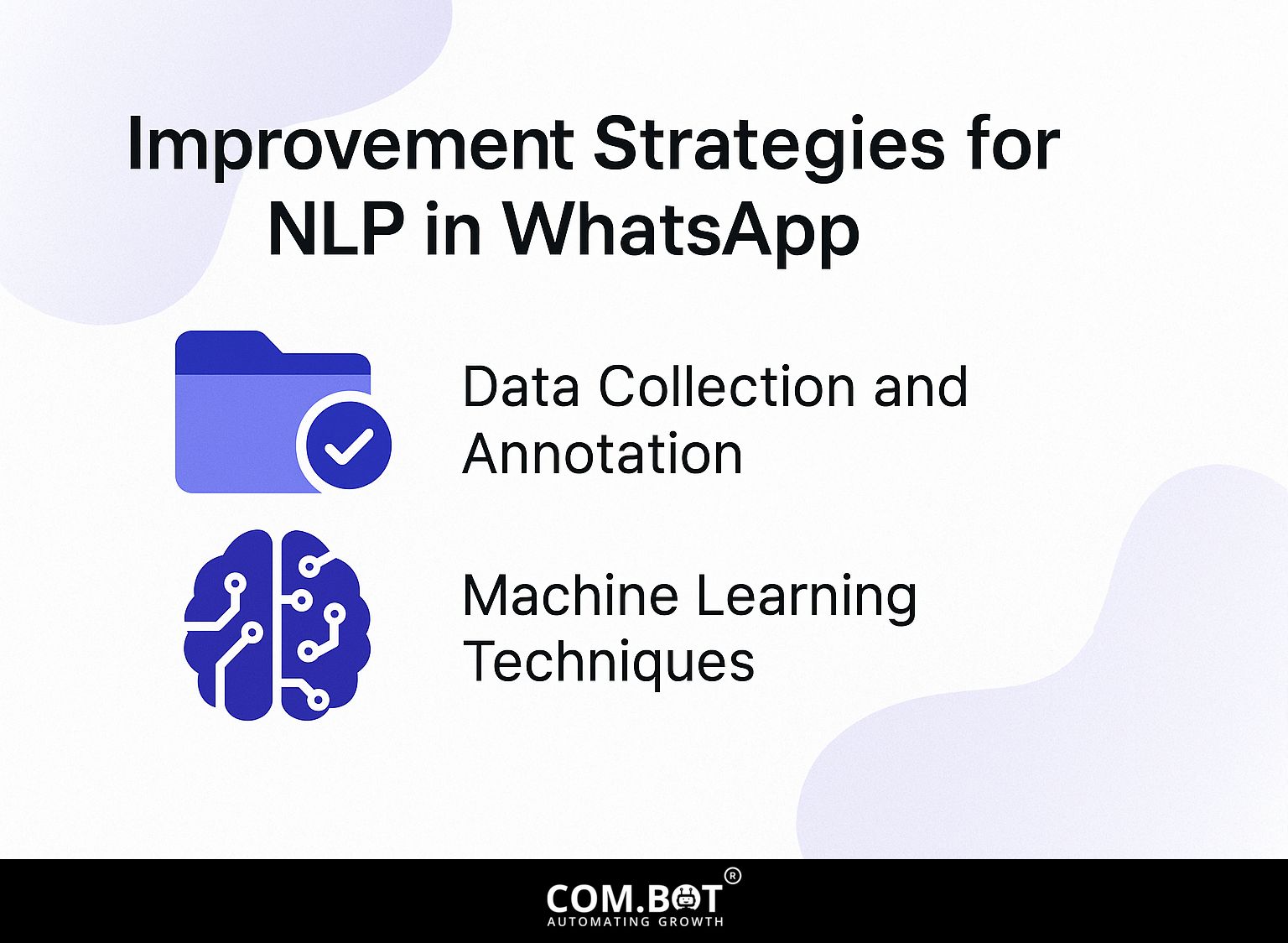
To improve NLP features in WhatsApp, businesses should use targeted methods involving gathering data, training models, and incorporating user feedback.
1. Data Collection and Annotation
Gathering and labeling data properly is important for building strong NLP models that can correctly understand user messages on WhatsApp.
To improve these processes, try using tools like Google Cloud Natural Language API to examine text characteristics like sentiment and entity identification. Combine this with user interaction logging methods to gather data on how individuals interact with your bot.
For annotation, platforms like Labelbox allow collaborative tagging of datasets, ensuring diverse input reduces bias. Looking at your labeled data often can help you spot mistakes and places to make changes, which can improve your NLP model.
2. Machine Learning Techniques
Improving the accuracy of natural language processing is important, especially in understanding how users communicate, by using modern machine learning methods. Two methods, supervised learning and deep learning, play a key role in improving this process.
For instance, supervised learning models can be trained using labeled datasets from WhatsApp interactions, improving the model’s ability to interpret intent and context.
Unlike simpler models, recurrent neural networks (RNNs) handle sequence data effectively, which makes them a good choice for handling conversation-based text.
A case study from a leading messaging platform demonstrated a 30% increase in user satisfaction after implementing these techniques, showcasing their effectiveness in real-world applications.
Future Trends in NLP for Messaging Apps
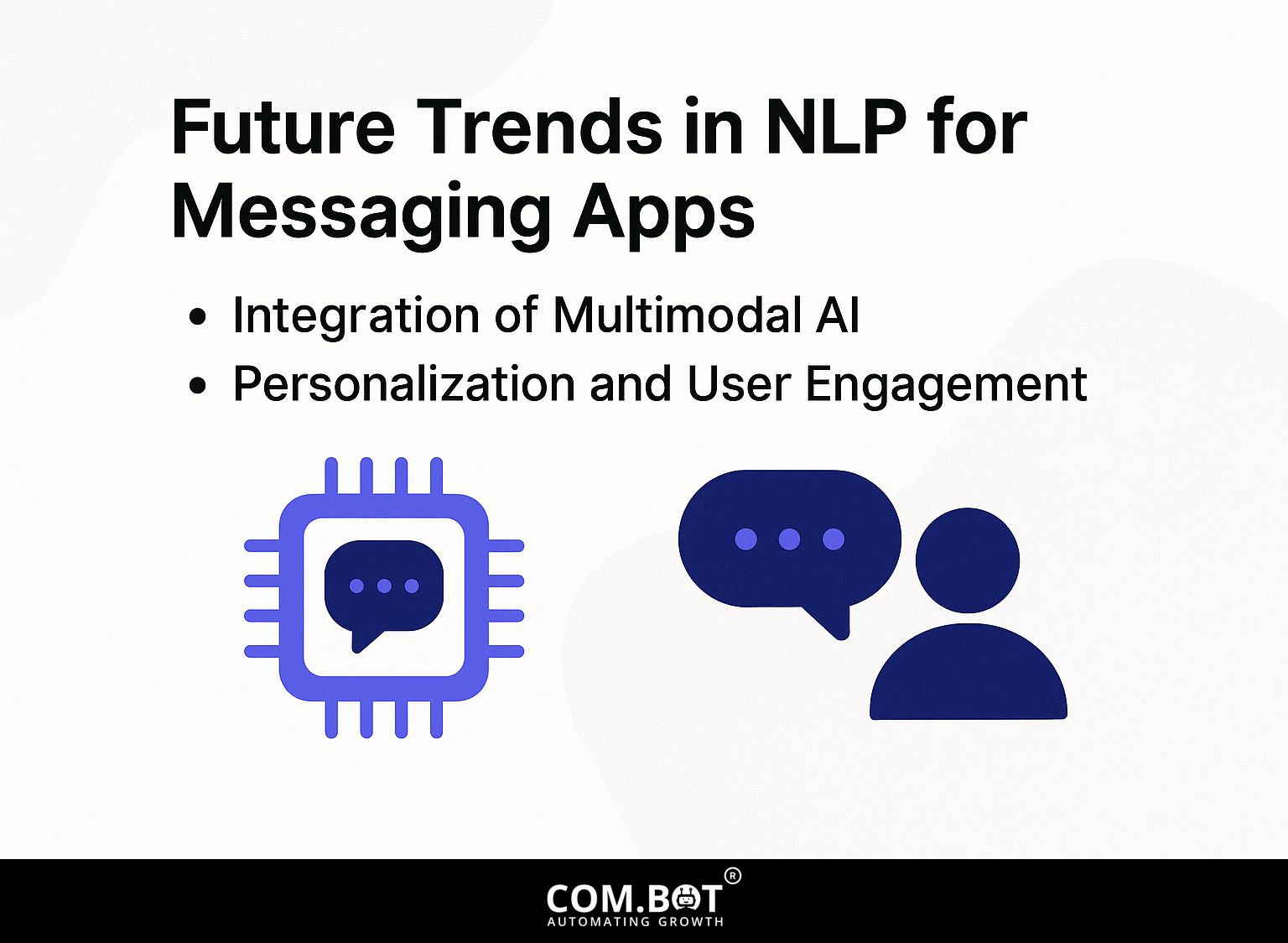
The next step for natural language processing in messaging apps like WhatsApp is using AI that can understand different types of data, changing how users interact and stay engaged. WhatsApp AI chatbots are becoming increasingly popular as they enhance user interaction through advanced capabilities. Learn more about how these chatbots are transforming communication by exploring the detailed features and functionality of WhatsApp AI Chatbots.
1. Integration of Multimodal AI
Adding multimodal AI to WhatsApp will improve communication by using text, voice, and images together, leading to more engaging user interactions.
To implement this, developers can use tools like Google’s Dialogflow for natural language processing, enabling voice commands and query handling.
Pair this with Microsoft’s Azure Cognitive Services for image recognition, supporting users in sending multimodal messages.
For practical purposes, adding voice synthesis can enable messages to be spoken, improving accessibility. Apps like Gupshup illustrate how chatbots can employ multimedia elements, allowing users to share images and videos seamlessly while engaging in conversation. This combination greatly improves how users interact with it.
2. Personalization and User Engagement
Personalization powered by AI is set to redefine user engagement on WhatsApp, allowing brands to tailor interactions based on individual user preferences.
By analyzing user information, companies can send messages that fit what users are interested in. For instance, utilizing tools like Twilio to segment audiences can improve engagement rates by up to 30%.
Using chatbots that change responses based on past interactions creates a more engaging conversation. Using strategies like custom suggestions, birthday greetings, or order notifications can build a sense of connection and strengthen customer loyalty, leading to a more engaging user experience.
Frequently Asked Questions
1. What is Natural Language Processing in WhatsApp AI?
Natural Language Processing (NLP) in WhatsApp AI means using methods that allow computers to grasp and make sense of human language in chat discussions inside the messaging app.
2. How can Natural Language Processing improve WhatsApp AI?
Natural Language Processing can make WhatsApp AI better by helping it understand and reply to users’ messages more accurately and quickly. It can also help in automating tasks, categorizing messages, and improving overall user experience.
3. What are some practical applications of Natural Language Processing in WhatsApp AI?
Natural Language Processing in WhatsApp AI can be applied for translating languages, identifying emotions, interacting with chatbots, detecting spam, and providing suggestions based on a user’s chat history.
4. How does Natural Language Processing work in WhatsApp AI?
Natural Language Processing in WhatsApp AI involves the use of machine learning algorithms that analyze the structure of human language, including grammar, semantics, and syntax, to understand and respond to messages in a chat conversation.
5. Can users control the level of Natural Language Processing in WhatsApp AI?
Currently, users do not have control over the level of Natural Language Processing in WhatsApp AI. However, the app’s developers are always working to improve the language processing features to make the app better for users and give more customized replies.
6. What are the potential benefits of implementing Natural Language Processing in WhatsApp AI?
Adding Natural Language Processing to WhatsApp AI can result in faster replies, better accuracy in reading and answering messages, more effective task automation, and a customized experience for users.
